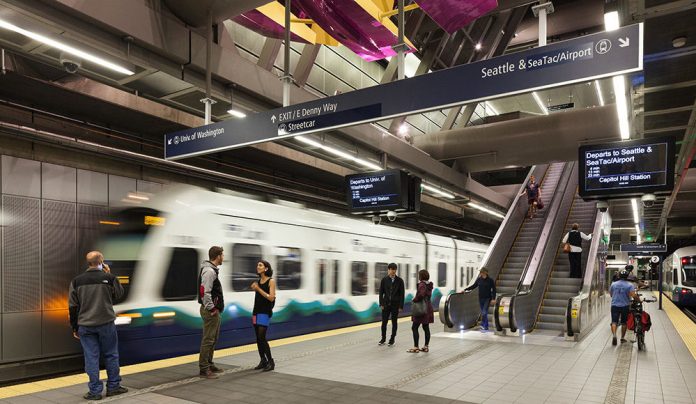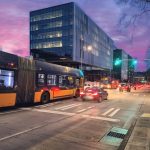This article is the second in a two-part series about designing a new rail network for Seattle and its surrounding areas. You can read Part 1 here.
We live in an interesting time. It’s been about eight months since Covid first landed on our shores and seven months since we locked down. Back then, it seemed like the world had turned upside down but we held our heads high for a return to normalcy. Today, time still seems to be endlessly drudging on, still keeping our long-lost pre-pandemic lives very out of reach.
It’s sometimes fun to reminisce about what life was like before things took a pause; we used to meet others as a fact of life and roamed the streets however we pleased, the little things we took for granted but wouldn’t dare do anymore. Back then we were well in our stride building out ST2 and planning ST3 (Sound Transit was even speeding up some station openings), and despite some hiccups bus ridership was doing pretty well.

But now amidst virus spreading, revenue losses, and construction delays, it doesn’t seem like we’ll be able to love transit the way we used to for a long time. Alas, the pandemic is a curse but also an opportunity. It gives a reminder to improve the transit we have, a chance to secure massive transit funding (in the name of job creation, but more on this later), and time to dream about a brighter transit future.
Lessons from Covid
Before Covid hit, crush-loaded transit vehicles were a common sight during rush hour. Seats onboard buses and trains filled quickly; unlucky passengers were packed into the aisle like sardines. But with social distancing, that’s simply not possible anymore. Vehicle capacities have been slashed to just one-fourth of their maximums, and it’s especially hard on Link.
If history is any indication, it’s not likely that we’ll get comfortable boarding crowded buses for a while. That means to get people back on transit, we’ll need to increase service frequencies so that there’s less people on each vehicle.
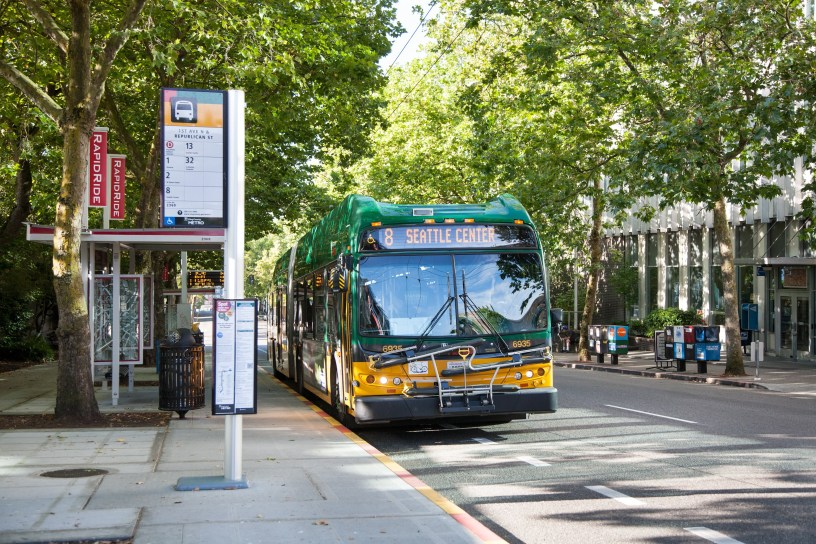
Unfortunately though, our existing transit systems face some constraints; Link is limited to its current six-minute headway due to traffic signaling, and making three- or four-minute buses more frequent risks delays (without dedicated lanes, at least).
But let’s focus on Link (or more broadly, rail) for now. Building it is crucial to increasing transit capacity since capacity-wise a maxed-out rail vehicle trounces an articulated bus ten-to-one and can reliably run at much faster thanks to dedicated right-of-way. Strangely, each ST2/ST3 Link line (and the one we have now) will likely run at lower frequencies than many buses right now.
You might remember that in the last article we discussed upgrading the Metro’s Route 8 and Route 44 bus lines to rail but in a way that was purposefully incompatible with Link. At first it seems counterintuitive, but by designing those lines to be unapologetically not light rail we weren’t constrained to its decades-old design. We could change things that might have made sense for Link but not for Routes 8 and 44.
The result was that the 8 and 44 lines should be built with narrower 12-foot tunnels (as opposed to Link’s 21-foot ones) and run slimmer trains powered by a third rail (but with the same capacity). Let’s not stop there; Covid reminds us that we should add transit frequency for safety (and besides, who doesn’t want more frequent transit?), but with human drivers (like on Link) it isn’t really possible. So let’s get rid of them.
A Bit About Automation
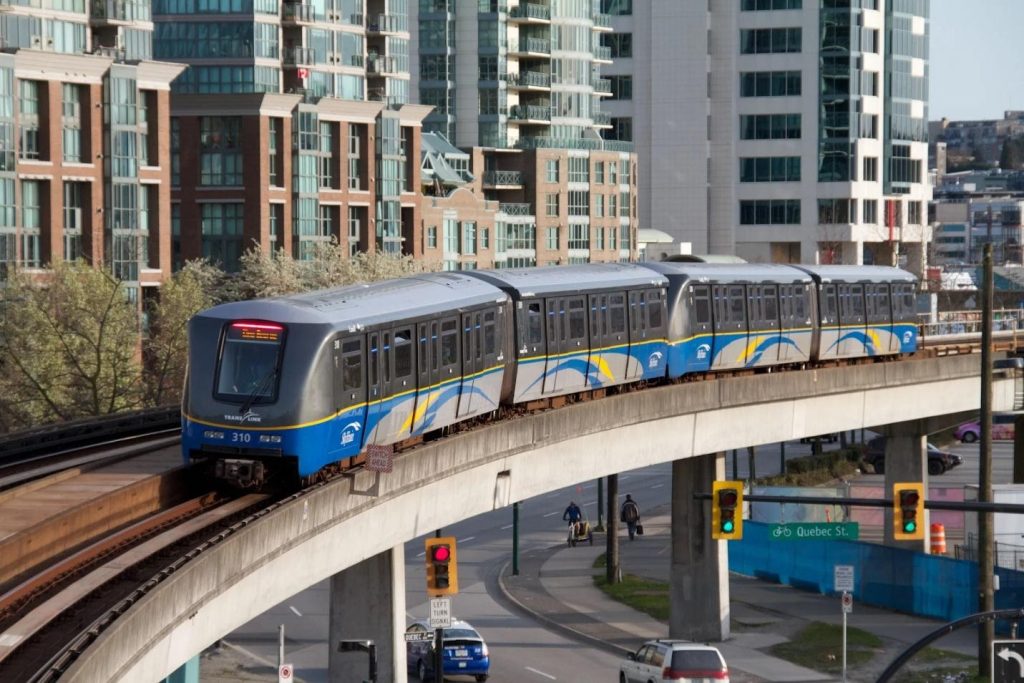
The reasoning behind automation is actually quite simple: frequency and reliability. London’s automated Victoria line can reach a frequency of 36 trains per hour (or one train every 100 seconds), and Vancouver’s SkyTrain can do the same. Electronic signaling allows trains to run closely together in precise harmony; no drivers means running shorter trains more frequently won’t cost more than running longer trains less frequently; computers make it easy to dispatch extra trains to meet surges in demand, like after a concert (just thinking about the future here). Safety is another advantage of automated trains: about 50% of rail transit accidents are caused by human error, so eliminating drivers from the equation could increase safety significantly (the Australian Parliament also launched an inquiry into this and they seem to agree).
Interestingly, having computers control trains have another interesting benefit: energy savings. It’s estimated that SkyTrain uses some 50% less electricity per passenger than similar systems because computers coordinate the braking of one train and the acceleration of another to maximize the usage of regenerative braking. Other systems generally see a 30% decrease in energy consumption after automation.
Technologically, automation isn’t very hard to implement. Apart from the initial capital cost, automation could pay for itself through reduced maintenance in the long-term. One could also argue that we could cut costs even more if we also got rid of train and station staff, but while that’s true it’s probably not the best thing to do. Having staff on board and in stations especially during quieter hours can help cultivate a sense of safety and helpfulness—a human touch that many transit systems seem to lack. As a sidenote, ST2 and ST3 could technically be automated as long as their at-grade crossings in SoDo and Bel-Red were to be eliminated. One way to do this is to elevate the line whenever it crosses a road and to move the station onto that elevated portion, sort of like what’s done on LA’s Expo Line.
Service drives demand—add more frequency, and more riders will come. As our population grows, the transit serving us needs to be ready for what the future brings, and not automating trains just isn’t gonna cut it.
A Bigger Picture
You might have noticed that I’ve been referring to the 8 and 44 lines rather disparagingly up until now (or maybe not), but I assure you that there’s a reason. Sure, those two new lines are great, but we’ll need a far more comprehensive network to reshape our car-dominated landscape. Indeed, the lines are just glimpses into a 21st-century transit utopia—one that that many other cities already have.
Which brings me to this: a Green New Deal railway vision for Puget Sound, created by Ace Houston on his House Cosmopolitan website (check it out!). In it are two maps: one that’s Seattle-specific with subways, streetcars, and Link and another that includes the broader region. There’s just so much going on, and it’s such a contrast to our one single line right now that I think some explaining might be in order.
There’s one modification that we might want to consider and that would be rail-ifying the 8 and 44 bus lines like they were proposed by Seattle Subway (to follow roughly the path of the buses themselves), rather than how they’re shown in Ace’s plan as separate lines (the 8 forms parts of the Emerald and Turquoise, and the 44 the Garnet and Sapphire) since the former would be shorter and thus quicker to build. Otherwise though, the maps do a great job at outlining a solid plan for Seattle, and are really neat that they ensure every Seattleite lives within a mile of rail.
Contrasting Ace’s map with the slightly more pragmatic Seattle Subway plans also draws another difference: the rail-ifying of the RapidRide E Line. On the Seattle Subway map, it (the Pink line) travels south from N 145th St along Aurora Avenue and joins the currently-planned Green Line from Ballard at South Lake Union and turns east at Midtown towards Issaquah. On Ace’s map, it also travels down Aurora but then dives into a new 2nd Avenue tunnel Downtown and heads south for Burien roughly along the path of the Route 120 bus line. The advantage of Ace’s plan is that the E Line is that it keeps it separate from the ST3 lines (for automation) and it serves new areas. Personally, I think Doug’s plan from a while back is a good compromise:

(Just imagine that the line continues east under Madison and follows the Seattle Subway Pink line from there.)
While Doug did want the line to be elevated, doing that the whole way could be a hard feat thanks to the steep elevation changes along Madison. Instead, the line could be elevated from its northern end to about Mercer, where it goes underground like the 8 and 44 (in 12-foot bored tunnels).
But this does bring up a good point and that’s that even though we may have made underground railways cheaper by slimming the tunnels, elevated rail will almost always cost much less. If we were to build either Seattle Subway’s or Ace’s plans, the alignments in and around Downtown should be underground (similar in form to the 8 and 44) but everything else should be elevated whenever possible (think North Seattle and Tukwila) to save costs. (Don’t worry—elevated rail actually blends into its surroundings pretty well.)
The next stop is: Financial District
The last part was unintentionally a convenient segway into the inevitable conversation about money (and taxes). Both Seattle Subway’s and Ace’s plans are relatively Seattle-centric (or more broadly, King County-centric), so they’d likely be a tough sell under a Sound Transit ballot measure. If we packaged them into an ST4, the new rail lines would have to be voted on by residents throughout the entire Sound Transit District, meaning most voters simply wouldn’t live close enough to use the new lines regularly and it wouldn’t be worth the investment.

Interestingly though, there is a relic from the monorail days that might let us bypass Sound Transit all together: a City Transportation Authority (CTA). Doug wrote a more detailed article on it a while back (and I highly recommend you check it out if you have the time) but the gist is that any city with a population over 300,000 can form a municipal taxing authority for fixed-guideway transit, and it can be created by a vote in the city council vote or by a ballot measure (a petition with 4,000 signatures is needed to get it onto the ballot). Luckily, Seattle CTA probably wouldn’t be the hardest thing in the world to pass considering its established love for transit, and historically during the Trumpian years it’s been the cities and counties that have led the charge for these progressive policies.
But there is one minor catch about the CTA, and it’s that it can’t be used to build light rail. That’s one of the reasons why it’s really important that the rail we’re designing doesn’t look like Link, but I’d fathom that since our lines are fully grade-separated and automated they’d be more heavy-rail-esque and able to sidestep that restriction (though in the end it would probably be up to the courts).
If we were to go the CTA route, it’d be best to start small. The ballot measure could include rail-ifying the 8 and 44 bus lines, the RapidRide E Line (which could continue into Aurora Village if Shoreline wanted in).
But given the large (think many billions) price tag that’s gonna be attached with the rail system, the more probable option would be to fund it through the federal government. Joe Biden was just elected, and that allows us to be rather hopeful for the future of transit. His $2 trillion climate plan promises wide-ranging federal investments to reduce carbon emissions, with transit playing a big part. Here’s an excerpt from his website:
“Provide every American city with 100,000 or more residents with high-quality, zero-emissions public transportation options through flexible federal investments with strong labor protections that create good, union jobs and meet the needs of these cities–ranging from light rail networks to improving existing transit and bus lines to installing infrastructure for pedestrians and bicyclists.”
The plan isn’t terribly specific on what those transit investments might look like, but it’s easy to imagine it being something like Lyndon B. Johnson’s Great Society that helped build BART, MARTA, and WMATA. Transport authorities were able to take advantage of enormous federal grants that were oftentimes worth hundreds of millions of dollars. If our concurrent Forward Thrust METRO was passed, almost two-thirds of it would have been paid for by the federal government.
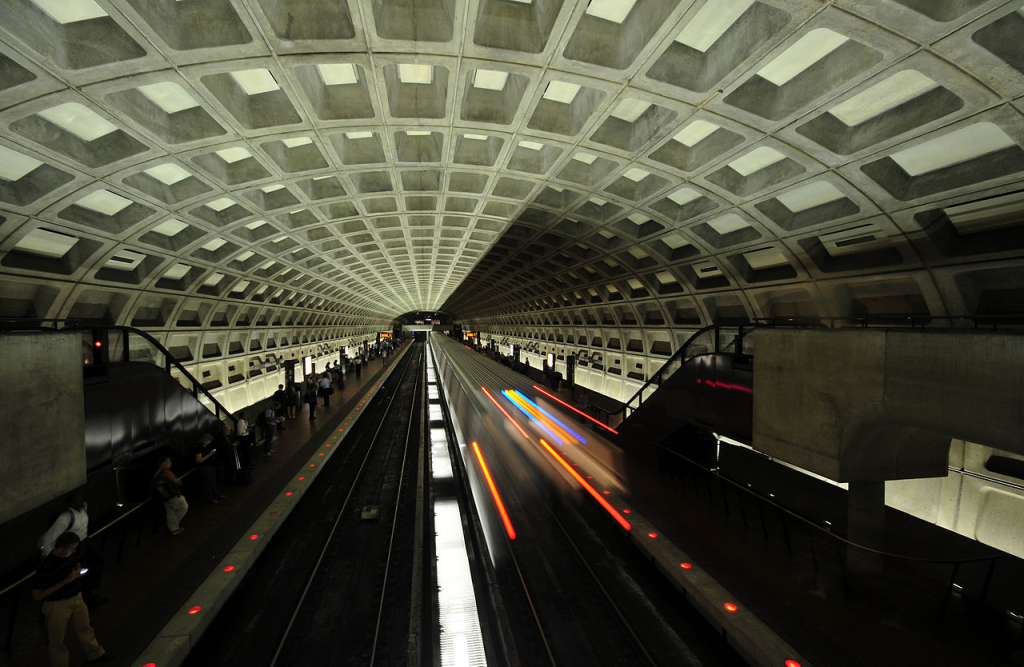
Considering our current economic turmoil—a massive recession with millions of jobs simply not coming back—along with the increasing need to transition away from oil and gas jobs, there’s huge incentive for a Biden administration to invest in transit. Several media outlets have predicted Biden drifting more towards the left as time went on—could a Green New Deal be in his sights? Regardless, investing in transit gives the feds the most bang for their buck when it comes to jobs per dollar spent and transportation is the single greatest polluting sector in Washington—rail-ification will let us solve both those problems in one go. Boeing is also, um, leaving, so it might be useful to have some local jobs at hand for when things open up again.
Ironically, though, the future of transit here in the Puget Sound may very well rely on the will of people in Georgia, some of the same people who got our Forward Thrust funding after we voted it down. Should Georgians choose Republican senators (instead of Democrats) in the upcoming runoff election, it’d dramatically increase the likelihood of a transit stimulus package not passing Congress and thus not being realized. Maybe the more moderate Republican senators will side with Biden. Or maybe he’ll just pass an executive order like FDR did. Who knows? We live in an interesting time. Let’s just keep dreaming—we’ll see what happens.
Brandon Zuo is a high schooler and enjoys reading about urban planning and transportation. They enjoy exploring the city on the bus and on their bike. They believe that income and racial equality should be at the forefront of urban development. Brandon Zuo formerly wrote under the pseudonym Hyra Zhang.

